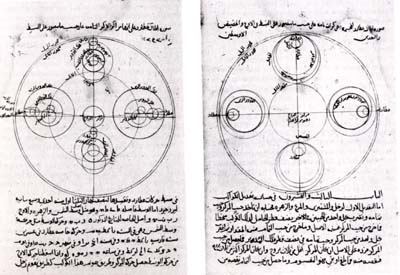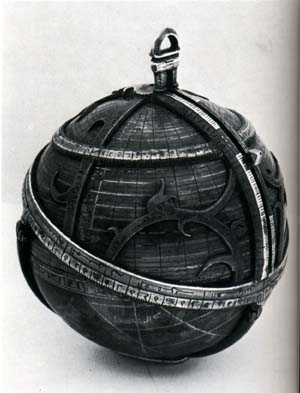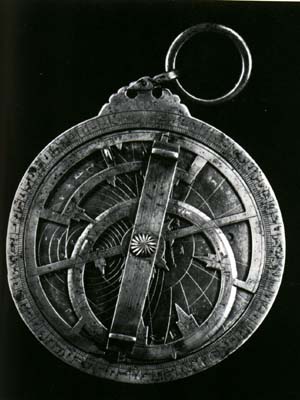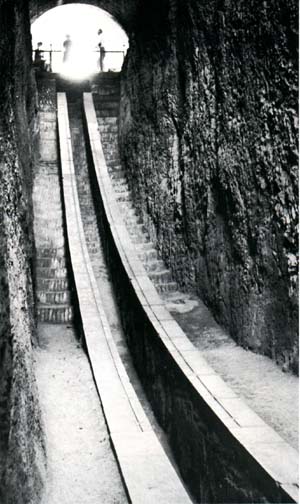Advances in Islamic Sciences - Part I
The set of pictures below tells about the advances of Islamic sciences before the modern era. Islamic scientists were respected then and many of their findings became the foundations or important components of the sciences that we know today. There is much written about how advanced Islamic science during medieval times. Taken from "THE WORLD OF ISLAM"- Faith, People, Culture" By Bernard Lewis. Copyright Thames and Hudson, 1992

Islamic Astronomy (dated 14th century): These 2 diagrams from Ibn ash-Shatir's Nihayat al-sul illustrate the first successful representation of the motions of Planet Mercury exclusively in terms of uniform circular rotations.
Top

Spherical Astrolab (dated 1480): These were rare and the only one known to exist. The large ecliptic circle bears the names of the signs of the zodiac. The rete, or star map, is attached to the globe with pointers for nineteen fixed stars.
Top

Astrolab (dated 9th century): This was for measuring the altitude of heavenly bodies above the horizon, and so determining (among other things) the time of day or night. Readings are taken by means of rotatable alidade, a diametrical rule with sights.
Top

Celestial Sphere (dated 1285): This equipment is from Iran. It incorporates information derived from Abd ar-Rahman as-Sufi's Book of Fixed Stars.
Top

Observatory: At Samarqand, a great observatory was built. This trough supported a large arc erected in the meridian plane. Celestial bodies crossing this plane cast light through an opening at the arc's centre onto a graduated cylindrical base, from which their altitudes could be read off.
Top
Advances in Islamic Sciences - Part II
|